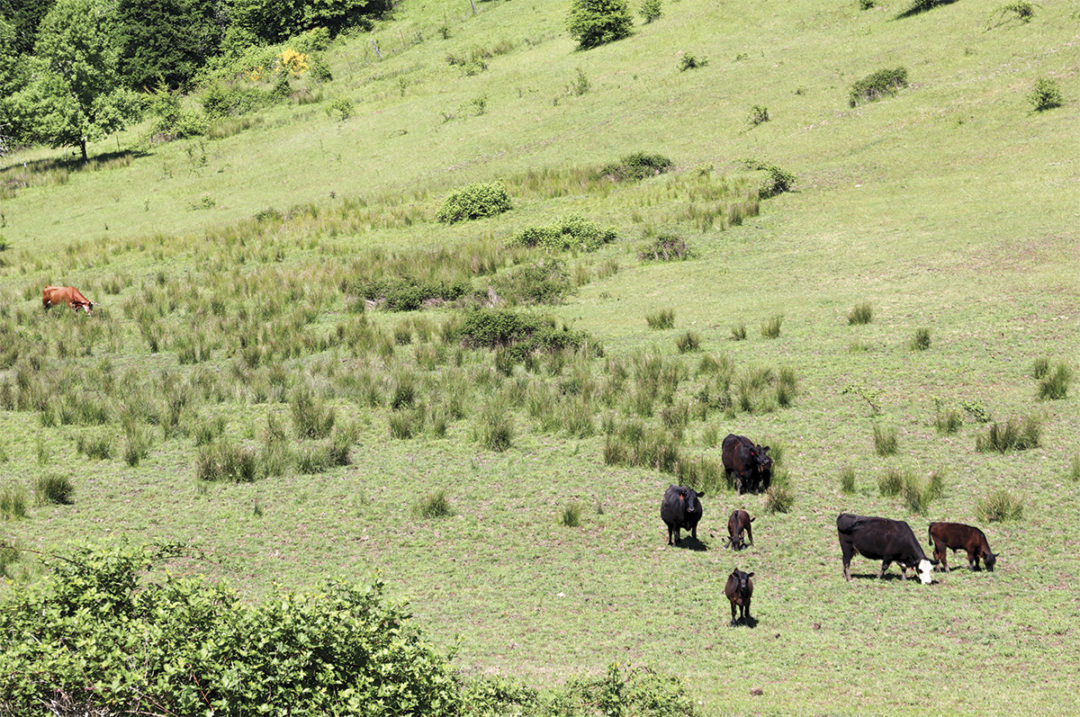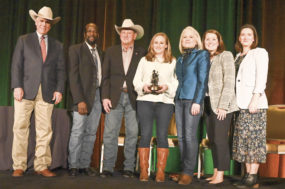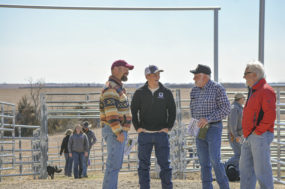In high school biology, we were introduced to the fact that a phenotype is a function of genetics and environment. As cattle producers, we are constantly trying to optimize these two pieces. Ultimately, we get paid for phenotypes (weaning weight, carcass merit, etc.), so it is in our interest to improve both our herd’s genetics and the environment in which we raise those animals. A clear push and pull exists between genetic potential and the environment. Animals that do not receive sufficient resources or are exposed to extremely challenging environments may never reach their genetic potential. Likewise, an animal lacking genetic potential will fail to perform, even under the most favorable environment and management.
Nutrition as an environmental difference
When we consider environmental differences between farms, we typically think of weather-related measurements such as temperature or precipitation. I would argue that feed availability is the most critical part of an animal’s environment. Weather patterns and climate can undoubtedly drive forage and feed growth. However, considerable variation in nutrition may exist between operations that are physically close to one another, likely due to differences in grazing management and stocking rate.
It is important to remember that the actual limiting factor of our operations is not the number of cows we run but our land footprint and forage quality. This idea directly translates to the genetics we seek out. In forage-rich situations, we can support larger, heavier-milking cows with more genetic potential for growth. In a resource-limited environment, a more moderate cow with lower milk production may help us maximize our productivity per acre. Ideally, a cow should be able to wean off 45% to 50% of its mature weight annually. Individual cows that fall short of this target may be costing us more than they’re worth. If our herd is consistently missing the mark here, it may be that our herd’s maintenance needs are not being met fully by our forage.
Interactions between genetics and the environment
If balancing genetic potential and nutritional needs wasn’t challenging enough, we also have to consider that some animals’ genetic potential might not be the same across all environments. We describe cases where genetic potential varies across environments as genotype-by-environment (GxE) interactions. An example of this might be an animal with exceptional growth genetics, so long as they aren’t exposed to extreme heat. This animal’s inability to cope with heat stress prevents it from reaching its full growth potential. In other cases, we might have a cow with enormous lactation potential (and thus maternal contribution to weaning weight), but only if it is in a high plane of nutrition. Another cow in the same herd might have a more steady genetic potential for milk, regardless of feed availability.
In the absence of GxE, we expect that genetic differences between animals will be the same across a gradient of stressful environments (i.e., declines in productivity will be the same). In the most extreme cases of GxE interactions, we can observe animals reranking based on the environment in which we breed them (e.g., the best bull for a producer in Tennessee might not be the best bull for a producer in Montana). Finally, we can also think of these GxE interactions in terms of robustness, where some animals can tolerate significant shifts in environmental stress without experiencing declines in productivity (Figure 1).

Acknowledging that GxE exists in beef cattle is one thing. Predicting it is a major challenge. Our methods of genetic prediction that generate expected progeny differences (EPDs) use contemporary groups to control for environments between individuals. This helps us directly compare genetic merit between animals raised on different farms and in various parts of the country. This means that EPDs contain only information about the “additive” genetics that an animal will pass down to its offspring, regardless of the environmental context. In other words, EPDs are our expectation of average offspring performance if we breed a sire across all environments.
Adaptive phenotypes and selection tools
One alternative approach to addressing adaptation is directly measuring and predicting phenotypes that might help an animal respond to a stressful environment. The two best-known adaptive phenotypes that are routinely measured are pulmonary arterial pressure (PAP) and hair shedding (HS). Pulmonary arterial pressure is an indicator of hypertension in cattle and is used as an indicator of an animal’s susceptibility to high mountain (brisket) disease. PAP is particularly useful in identifying animals that will be able to produce at high elevations. Hair shedding indicates how early in the spring an animal sheds its winter coat. It is scored subjectively on a scale of 1 to 5, where 1 indicates a complete shed and 5 indicates a fully intact winter coat. Cows that shed their winter coat earlier in the season can better deal with heat stress and the effects of toxic fescue. This adaptation allows cows to partition energy toward lactation and maintenance rather than temperature regulation, resulting in better health outcomes and heavier calves. The American Angus Association calculates EPDs for both PAP and HS, enabling more accurate genetic selection for these traits that can help increase an animal’s adaptations to environmental stressors.
Future solutions for precision breeding
The research community is exploring numerous avenues for helping identify well-adapted animals to inform more precise breeding. An ongoing collaboration between Angus Genetics Incorporated and multiple academic institutions will examine strategies for integrating detailed environmental data into genetic predictions. This includes detailed climate data, satellite imaging and information on management intensity from producers. The team, led by Guilherme Rosa at the University of Wisconsin, hopes to integrate environmental, phenotypic and genomic information to produce environment-aware EPDs that allow producers to select bulls that will perform optimally in their natural and management environment.









